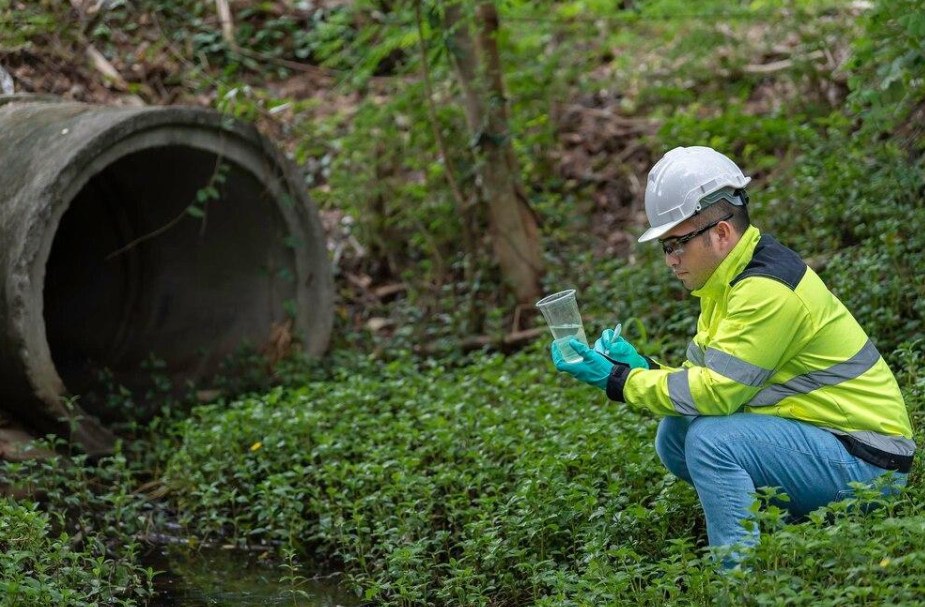Navigating the complexities of environmental challenges is vital for both businesses and communities. Understanding available remediation services can empower decision-makers to address contamination issues effectively. Key services include soil remediation, crucial for reversing contamination from industrial activities, with a market projected to grow significantly. Water treatment services are increasing in importance due to pollution concerns and water scarcity. Air quality management is essential as urban air pollution affects public health drastically. Hazardous waste management focuses on the safe disposal of dangerous materials, reflecting rising environmental awareness. Finally, thorough site assessments are critical for developing effective remediation strategies across contaminated sites. Together, these services form a foundation for environmental sustainability that we all need to recognize and support.
1. Soil Remediation: Techniques and Market Growth
Soil contamination can significantly impact ecosystems and human health. It often stems from industrial processes, agricultural runoff, or improper waste disposal. The soil remediation market is responding to these challenges, with a projected growth to approximately $8 billion in 2022 and an expected annual growth rate of around 8% through 2030. This increase is largely fueled by stricter environmental regulations and a growing emphasis on sustainable land practices.
Several techniques are employed in soil remediation. Bioremediation is one popular method, utilizing microorganisms to break down pollutants naturally. For instance, certain bacteria can effectively degrade petroleum hydrocarbons in contaminated soils. Another method is thermal remediation, which involves heating the soil to high temperatures to vaporize and remove contaminants. This technique can be particularly effective for heavy metals and volatile organic compounds.
The choice of technique often depends on the type and extent of contamination, as well as economic considerations. As awareness of environmental issues grows, so too does the demand for innovative and efficient soil remediation solutions.
2. Water Treatment: Trends and Innovations
Water treatment is becoming increasingly vital as global water crises escalate. With pollution from industrial processes and agricultural runoff threatening both drinking water and ecosystems, innovative solutions in water remediation are essential. The market is projected to grow significantly, driven by advancements in technology and increasing awareness around water quality.
One of the latest trends is the use of advanced oxidation processes (AOPs), which break down even the toughest contaminants, such as pharmaceuticals and personal care products, that traditional methods often fail to remove. Implementation of smart water technologies, including IoT devices, enhances monitoring and optimizes treatment processes, ensuring water quality is consistently maintained.
Furthermore, the push for sustainability is reshaping the industry, with a focus on water reuse and recycling. This is particularly important in water-scarce regions where every drop counts. Real-world examples include cities like Los Angeles, which has invested heavily in water recycling programs, aiming to reduce reliance on imported water.
The integration of renewable energy sources, such as solar power, in water treatment facilities also represents a significant step towards reducing carbon footprints while ensuring efficient operations. As these trends evolve, staying informed about innovations in water treatment can help communities and businesses address their water quality challenges effectively.
- Advanced oxidation processes for purifying water
- Membrane technologies for wastewater treatment
- Bioremediation methods using microbes
- Smart water management systems incorporating IoT
- Innovative filtration solutions for drinking water
- Chemical treatment advancements for heavy metals removal
- Remote monitoring and control of water quality
3. Air Quality Management: Insights and Technologies
air quality management plays a crucial role in safeguarding public health and the environment. As urbanization and industrial activities escalate, so does the level of air pollution. Recent statistics from the World Health Organization highlight that outdoor air pollution was responsible for an alarming 4.2 million premature deaths globally in 2019. This stark reality emphasizes the importance of effective air quality management strategies.
Technological advancements are transforming air quality management. Innovations like biofilters, which use natural processes to remove pollutants, and electrostatic precipitators, designed to capture particulate matter, are becoming more common. These technologies not only enhance air quality but also reduce the operational costs associated with air pollution control. Additionally, real-time air quality monitoring systems are now available, providing immediate data that can guide timely responses to pollution spikes.
Communities and businesses are increasingly investing in air quality management services, driven by regulatory requirements and a growing public awareness of health impacts. For example, cities are implementing green infrastructure, such as urban forests and green roofs, to improve air quality naturally. By integrating these innovative solutions, we can create healthier environments for future generations.
4. Hazardous Waste Management: Market Dynamics and News
hazardous waste management is a critical aspect of environmental protection, focusing on the safe handling, treatment, and disposal of harmful materials. The market for these services is expected to grow significantly, with projections estimating it will hit $50 billion by 2025. This growth is largely driven by stricter regulations aimed at safeguarding public health and the environment. Companies and municipalities are becoming increasingly aware of the risks associated with hazardous waste, leading to a surge in demand for responsible management practices.
Recently, many organizations have started to adopt zero-waste policies, which aim to minimize waste generation and promote recycling. This shift is reshaping the landscape of hazardous waste management, encouraging innovative solutions that align with circular economy principles. For instance, businesses are exploring ways to recycle hazardous materials rather than simply disposing of them, thus reducing the overall environmental impact.
Additionally, there have been notable advancements in technologies for hazardous waste treatment. For example, thermal treatment processes that can effectively neutralize toxic substances are gaining traction, helping to ensure that hazardous waste is dealt with more efficiently and safely. As awareness of environmental sustainability increases, the focus on effective hazardous waste management will continue to evolve, underscoring its importance in our collective efforts to protect the planet.
| Market Value | Projected Growth Rate | Key Drivers | Recent Trends |
| $50 billion by 2025 | X% annually | Stricter regulations, Increased environmental awareness | Adoption of zero-waste policies, Circular economy principles |
5. Site Assessment and Remediation: Growth and Key Technologies
Site assessment and remediation are critical for identifying contamination levels and determining the best course of action. This process starts with preliminary assessments, which may include soil sampling and groundwater testing, to evaluate potential risks. As urban areas expand, the need for efficient site assessments has surged.
Recent advancements in technology are transforming how assessments are conducted. For instance, drone surveys allow for quick aerial inspections of large sites, while digital mapping tools enhance data collection and visualization. These innovations not only save time but also improve accuracy, enabling better decision-making for remediation efforts.
The market for site assessment and remediation is expected to grow at an annual rate of around 6%. This growth is driven by urban development projects and the rising need to rehabilitate contaminated sites. As part of this process, methodologies such as risk assessment and feasibility studies are crucial. They help stakeholders understand the extent of contamination and the best strategies for cleanup. Overall, integrating technology into site assessments leads to more effective and timely remediation, paving the way for safer environments.
Frequently Asked Questions
1. What are environmental remediation services?
Environmental remediation services are actions taken to clean up and restore contaminated land or water to make it safe for people and wildlife.
2. Why is environmental remediation important?
It’s important because it helps protect public health and the environment by removing harmful pollutants and restoring ecosystems.
3. What types of contamination do these services address?
These services address various types of contamination, including hazardous waste, chemicals, oil spills, and heavy metals.
4. How is the process of environmental remediation conducted?
The process often involves assessing the contamination, developing a cleanup plan, and using methods like excavation, treatment, or containment to remove or manage the pollutants.
5. Who can benefit from environmental remediation services?
Many can benefit, including landowners, businesses, government agencies, and communities that want to restore contaminated sites for safe use.
TL;DR This blog post discusses five key environmental remediation services: Soil Remediation, Water Treatment, Air Quality Management, Hazardous Waste Management, and Site Assessment and Remediation. It highlights market growth, current trends, and innovative technologies shaping these fields, emphasizing their crucial role in addressing contamination and sustainability challenges. Staying informed on these services is vital for a healthier planet.






